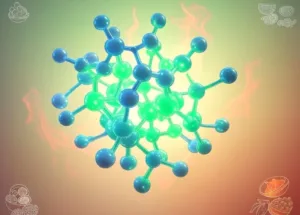
Google Willow Chip
Table of Contents
- Introduction to Quantum Computing
- What Makes the Google Willow Chip Special?
- Advancements in Qubit Technology
- Applications of the Google Willow Chip
- The Future of Quantum Computing with Willow
- Conclusion
- References
1. Introduction to Quantum Computing
Quantum computing is transforming the world of technology. Unlike traditional computers, quantum computers use qubits, which process information in ways classical bits cannot. Qubits can exist in multiple states simultaneously due to a phenomenon called superposition. This allows quantum computers to solve problems at unparalleled speeds.
The release of the Google Willow Chip marks a significant milestone in quantum computing. Building on its predecessor, Sycamore, Google has developed Willow to address challenges in scalability and error correction. This innovation sets a new standard for quantum processing capabilities.
Quantum computers are ideal for solving complex problems. Tasks like molecular simulations and optimization problems become manageable. The Willow Chip enhances these capabilities, ensuring faster and more accurate results.
2. What Makes the Google Willow Chip Special?
The Google Willow Chip stands out for its cutting-edge design. It improves qubit stability and error rates significantly. Previous quantum chips faced challenges in maintaining qubit coherence. Willow tackles this problem with enhanced architecture.
Key Features of the Google Willow Chip
| Feature | Description |
|---|---|
| Qubit Stability | Increased durability against environmental noise |
| Error Correction | Advanced techniques for reducing computation errors |
| Scalability | Support for larger quantum systems |
Google’s Sycamore chip gained fame in 2019 for achieving quantum supremacy. However, Willow goes beyond by offering better performance metrics. With these improvements, Willow supports larger and more complex quantum operations.
For instance, imagine solving a 1,000-piece puzzle. A classical computer works piece by piece, while the Google Willow Chip assembles multiple pieces simultaneously. This level of efficiency opens doors to revolutionary applications.
3. Advancements in Qubit Technology
Qubits are the building blocks of quantum computing. They differ from classical bits, which represent information as 0s or 1s. Qubits leverage phenomena like superposition and entanglement to handle data.
How Willow Enhances Qubits
The Google Willow Chip incorporates advanced materials and cooling systems to stabilize qubits. Previously, quantum systems struggled with qubit interference. Willow reduces these challenges through a refined design.
Additionally, Willow’s error correction system minimizes computational inaccuracies. For example, imagine typing on a faulty keyboard where every third letter is wrong. Willow’s error correction ensures each “letter” in a quantum calculation is precise.
Google’s commitment to scalability is another highlight. Willow supports larger quantum circuits, enabling more qubits to work together. This improvement is akin to upgrading a two-lane road to a multi-lane highway, allowing more traffic (data) to flow smoothly.
4. Applications of the Google Willow Chip
The Google Willow Chip has practical applications across various fields. It tackles problems that are too complex for classical computers. Below are some areas where Willow’s impact will be profound.
Pharmaceutical Research
Quantum computing accelerates drug discovery by simulating molecular interactions. The Willow Chip can analyze billions of molecular combinations in seconds. This capability could lead to faster cures for diseases.
Financial Modeling
Banks and financial institutions use quantum computing for risk assessment and portfolio optimization. Willow’s speed and accuracy make these calculations more efficient.
Artificial Intelligence
AI benefits greatly from quantum computing. Training complex machine learning models is faster with the Willow Chip. AI systems can analyze vast datasets in record time.
| Application | Benefit of Google Willow Chip |
| Drug Discovery | Faster molecular simulations |
| Financial Services | Improved risk assessments |
| Artificial Intelligence | Accelerated training for machine learning |
These examples demonstrate Willow’s potential to revolutionize industries. By solving real-world problems efficiently, the chip pushes boundaries in innovation.
5. The Future of Quantum Computing with Willow
The Google Willow Chip represents a leap toward the future of quantum computing. Its advancements pave the way for scalable, error-free quantum systems. This progress is critical for achieving practical quantum applications.
Industry Collaboration
Google’s open approach fosters collaboration with researchers and companies. By sharing findings, the Willow Chip inspires innovation across sectors. For example, startups working on quantum algorithms can integrate Willow’s capabilities into their projects.
Quantum Cloud Services
Google plans to make Willow available through quantum cloud services. Businesses will access quantum power without owning hardware. This democratizes quantum computing, much like cloud computing democratized traditional IT infrastructure.
| Milestone Achieved | Impact |
| Enhanced Error Correction | Reliable quantum computations |
| Scalable Design | Support for larger quantum applications |
| Cloud Accessibility | Wider adoption of quantum technology |
Willow’s role in future technologies cannot be overstated. It lays the foundation for advancements in cryptography, logistics, and beyond.
6. Conclusion
The Google Willow Chip redefines what quantum computing can achieve. Its innovative design overcomes longstanding challenges in stability, scalability, and error correction. Industries ranging from pharmaceuticals to finance stand to benefit immensely.
Google’s investment in Willow demonstrates its commitment to leading the quantum revolution. As quantum systems become more accessible, they will transform how we solve problems globally. The Willow Chip is a beacon of this transformative journey, ushering in a new era of computational power.
7. References
- Google Blog on Willow Chip: Google Blog
- Quantum Computing Overview: IBM Quantum Computing
- Applications of Quantum Computing: Nature Article






